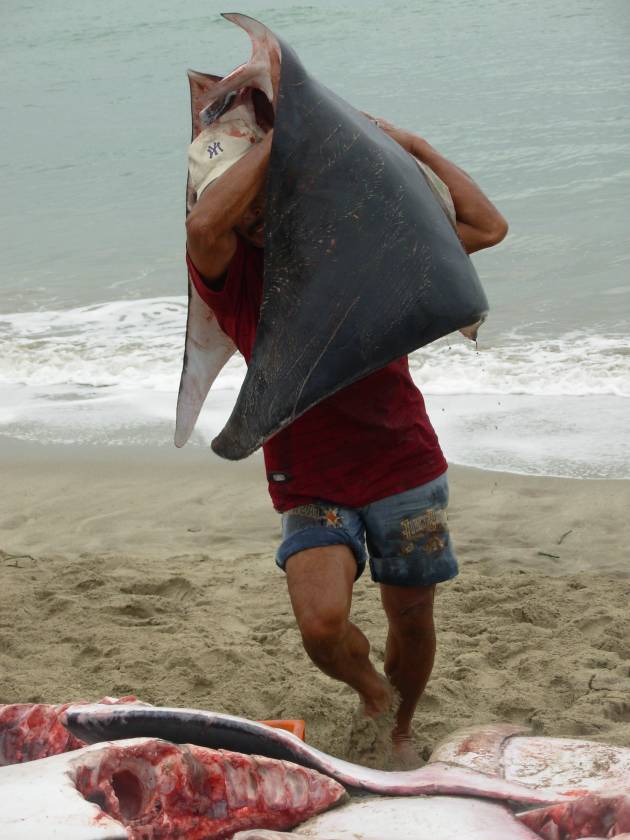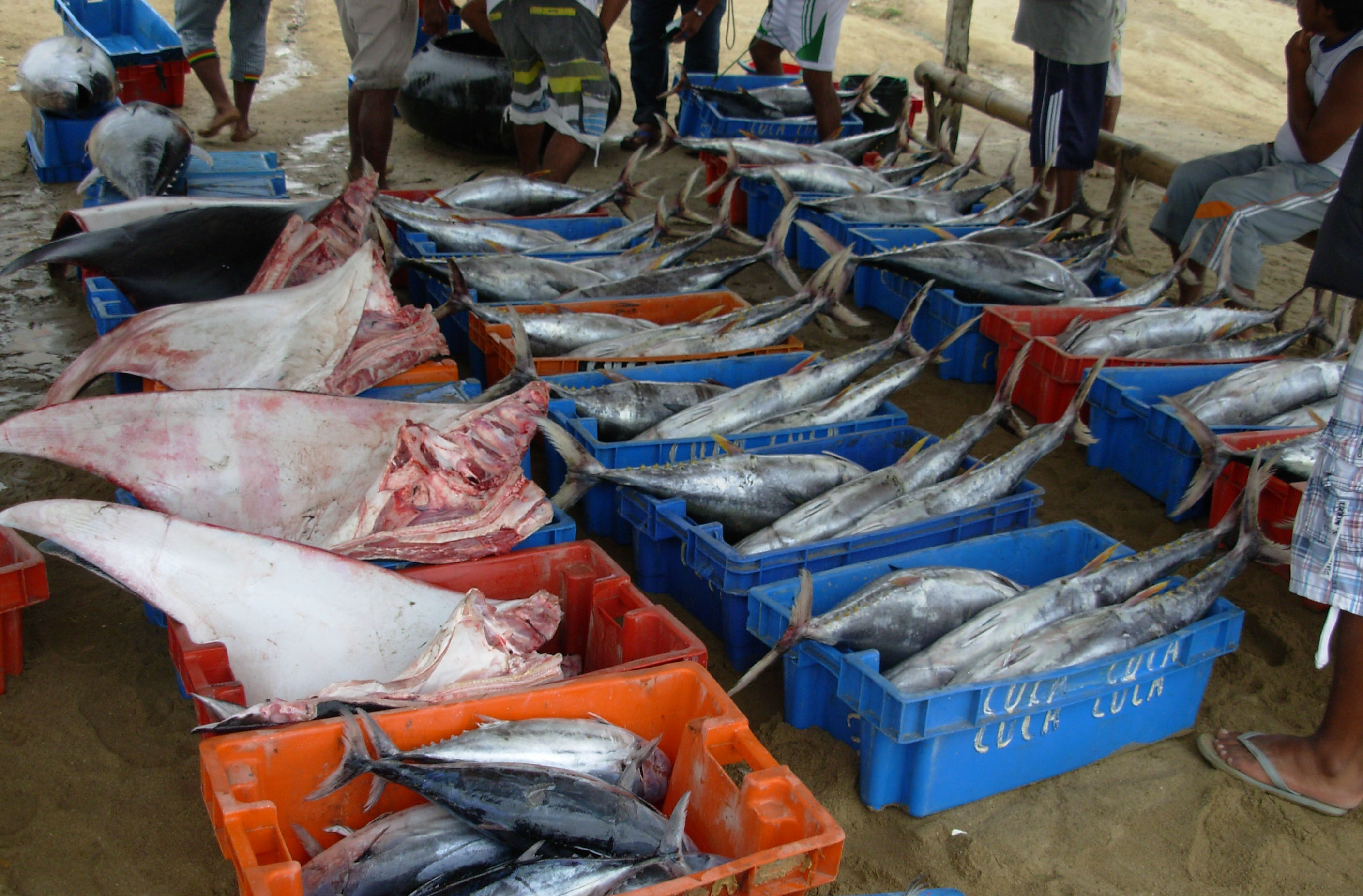Previous reports of Mobulid landing in Peru

Landing Mobulid in Zorritos. © APECO
The objective of our project is trying to obtain some base information of Mobulid ray fishery in Peru. However, there is previous information collected in our country.
Let see what report this source: The landings show us that more than 24 t of Mobulid ray were reported in Tumbes ports during 2009 (Ordinola et al 2010). Almost 171 t were landed in the same area during the first three months of 2010 (IMARPE, 2010). IMARPE (2012) reports a total of 111.4 t all months of 2011, with a maximum of 42.5 in August and a minimal of 1.2 in April. IMARPE (2013c) reported only 1 t of Mobulid landed in Tumbes during 2012. Meanwhile, more than 120 t were caught during first nine months of 2013 (IMARPE, 2013a, b).
Although the landings are variable between years, landings in 2010, 2012 and 2013 are major than Mobulid catches in Ecuador during 2009, before the Ministry Agreement which forbidden this fishery, when 83 t were reported in two port).
These governmental reports on Mobulid ray catch are referred like Manta rays. Even, the draft document of the National Action Plan to conserve rays, sharks and chimeras cited only Manta birostris as one of the species caught by artisanal fisheries in Peru. However, IMARPE has reported in the central Peruvian coast (Pucusana) the catch of Smoothtail Mobula Ray Mobula thurstoni.
Finally, we need to improve the effort in order to know the real situation of these Mobulids: identification of species, know if the landings are variable or the reports are the effect of other kind of factors. Our project will contribute with this important information.

